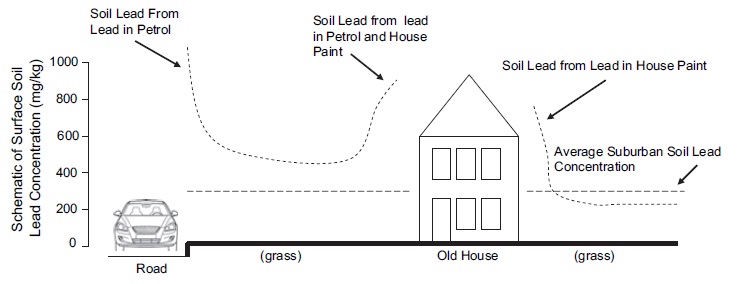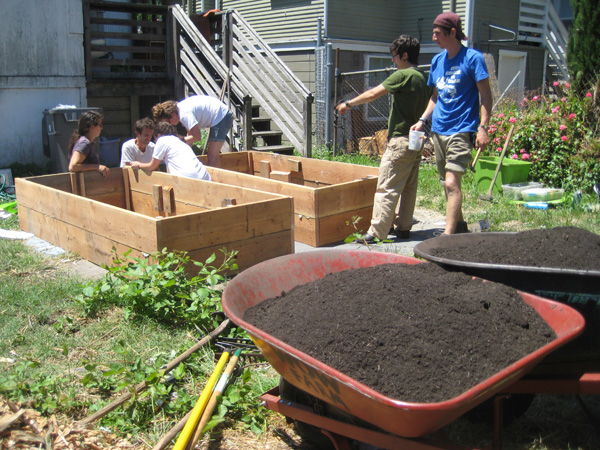The beauty of adopting a more resilient lifestyle is that anyone, anywhere in the world can participate. Whether you have acres of fertile land at your disposal or just enough room for a single raised bed garden, you can grow your own food while decreasing your dependence on “the system.”
We spend a lot of time discussing different ways to maximize available space when gardening – a subject especially important for those of us living in urban areas where space can be difficult to find.
It’s also worth noting that a recent survey conducted by The National Gardening association reported that the number of Americans cultivating urban gardens has risen to 9 million people; an increase of 29% in just the last 5 years.
Obviously, people want to grow their own food despite America’s great migration back to the city.
One of the most common techniques used by urban dwellers is raised bed gardening. This technique is easy to use and provides a variety of benefits including improved drainage and complete control of the growing environment.
The problem that many urban gardeners overlook is the quality of the soil.
This week, I want to look at some of the common contaminants found in urban soil as well as a couple of ways we can protect our food from these threats.
Lead, Arsenic and Cadmium
Lead is found in a surprisingly large number of urban soil samples. Even though plants don’t absorb lead through their root systems, root vegetables like carrots and potatoes can absorb lead through the skin.

Other vegetables that grow close to the ground, such as lettuce, can also suffer the effects of lead binding to the outer layers of plant material.
Even thorough scrubbing may not be enough to remove lead from the surface of these plants and lead poisoning is a serious concern; especially for small children.
Arsenic and cadmium are also found quite frequently in urban soil and can have devastating effects on the human body over long periods of exposure. These chemicals are not metabolized by the body and are often stored in fatty tissue forever.
Fortunately, most soil tests screen for these three chemicals.
Other Contaminants
While soil tests can usually confirm the presence of lead, arsenic and cadmium easily, there are lots of other chemicals that may not be detected in a standard soil test.
Some examples include petro-chemical residue and industrial cleaning solvents. Many of these chemicals are known carcinogens – others can have devastating effects on our endocrine systems.
Either way, these are not substances we should be consuming. Furthermore, they definitely aren’t conducive to organic gardening practices. If chemical-laden produce is your thing, just save yourself some time and buy produce from the grocery store.
If, on the other hand, you care about the foods you put into your body, here are a couple ways to mitigate the risks of hazardous chemicals in your urban garden.
Soil Testing
Despite what I said previously about soil tests not detecting many hazardous chemicals, it’s still a relatively cheap way to get a general idea of your soil’s overall health.
Most soil tests won’t detect every threat, but you can always ask the testing agency what chemicals they do screen for.
If your soil test comes back clean, you can focus on the next tip to uncover other contaminants that may not show up in the soil test.
Do Your Homework
Regardless of the soil test results you receive, the next step is to research the history of the area where you plan on growing.
This could be in your backyard or it could be an abandoned lot that has been converted into a community garden.
Rural areas of the country usually don’t change much, but the urban landscape is much more dynamic. What could be a modern apartment complex now might have been an industrial chemical manufacturing plant 50 years ago.
By researching the history of the land where you want to garden, you can quickly get an idea of other potentially harmful chemicals that could be hiding in your soil.
How to Protect Yourself
OK, so maybe your soil test came back with high amounts of lead or maybe the research you did on your property shows that there was a large chemical spill in the area at the turn of the last century.
If this happens to you…don’t worry. There are still ways to grow your own foods safely.
Obviously, my first recommendation if there are chemicals in the soil would be to find somewhere else to garden if possible. I realize this may be easier said than done, but try to think outside the box for a moment.
We have covered indoor vertical gardening setups in the past and this might represent the best course of action when space is limited.
In last month’s issue of Resilient Strategies, for example, I detailed a new product by Flow Gardens known as the “Living Refrigerator.” Despite the high price tag of this design, it proves that anyone can grow indoors successfully while simultaneously circumventing the risks posed by chemicals in the soil.
If growing outside is your only option and you have concerns about the safety of the soil, raised beds do offer a good option.
That said, there are some extra precautions you should take to minimize the risk of chemicals leeching into your grow beds from the contaminated soil below.
Experts recommend covering the growing area with at least 3” of high-quality mulch and placing the raised beds on top of this protective mulch layer.
I might recommend even more mulch, especially if the soil is highly contaminated. By placing raised beds full of high-quality soil atop a generous layer of inert material, the risk of chemical leeching is minimized.
Just be careful not to accidentally contaminate your soil with dirt from the surrounding area.
Another thought about raised beds…take care when selecting wood for the beds. Lumber is often treated with chemicals that inhibit rotting. Unfortunately, these chemicals are easily absorbed by soil and eventually, your plants too.
I recommend using redwood or cedar for raised beds whenever possible. Both of these species are naturally-rot resistant without the use of chemical additives and represent the best choice for maintaining an organic growing environment.
Now, let’s talk worst case scenario for a minute. Your soil is highly contaminated, a vertical gardening setup is not within your budget right now and there is nowhere else for you to grow fruits and vegetables.
What can you do?
Join a CSA program. You will be supporting local farmers and getting a good deal on fresh produce throughout the year.
While this solution may not be ideal, it’s certainly better than buying produce at big box grocery stores where your food could be coming from other countries – countries that still use large amounts of dangerous pesticides including DDT.
Urban gardening is definitely a hot topic right now as people are finally beginning to realize the importance of eating healthy foods.
My intention isn’t to scare anyone interested in gardening away from doing so, but there are risks inherent to urban gardening that should be recognized before undertaking this rewarding project at home.
With a little bit of planning and research, urban gardening offers an excellent opportunity for everyone to become involved in the resiliency movement right now, but let’s take the extra time to make sure the soil is safe for planting first.



